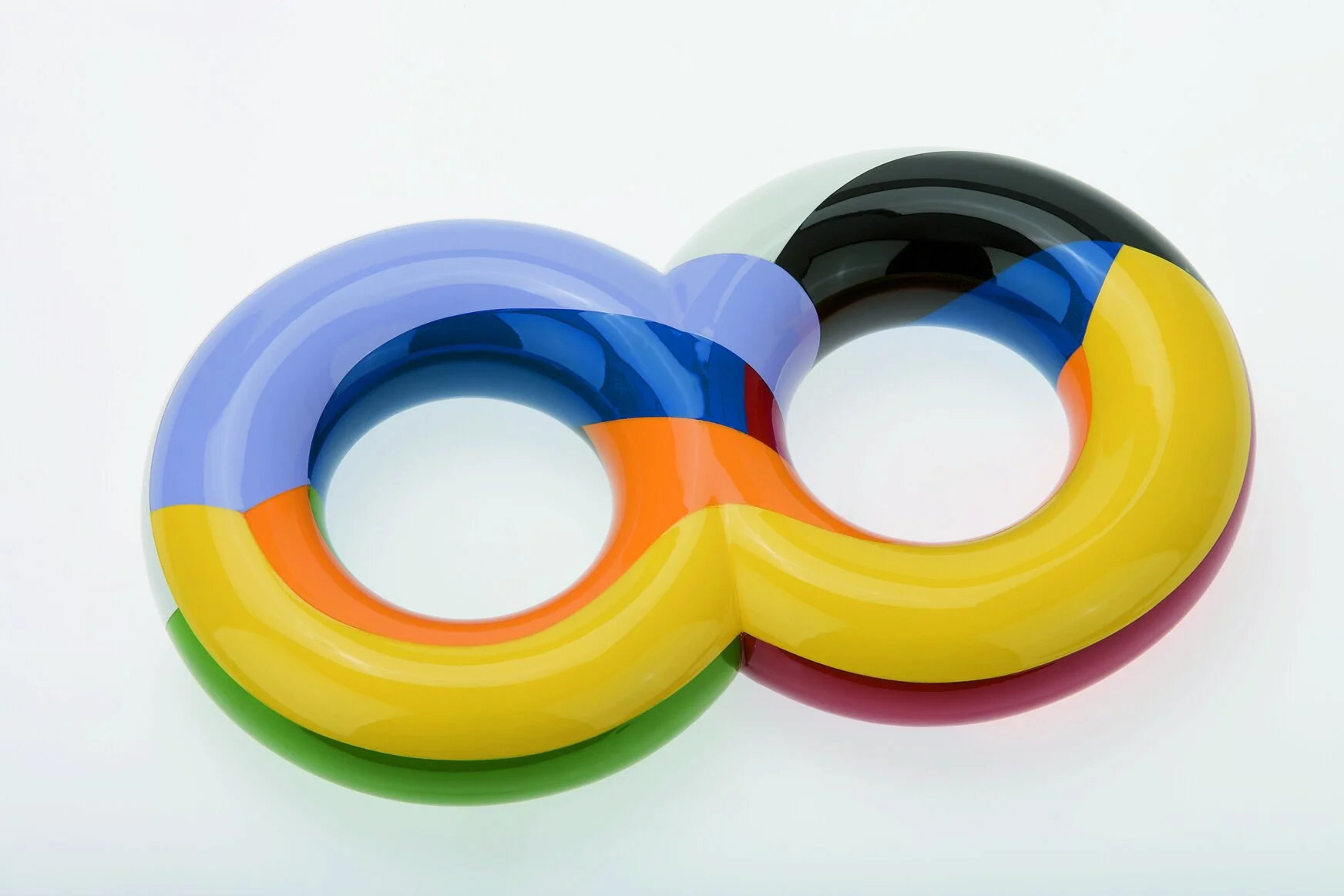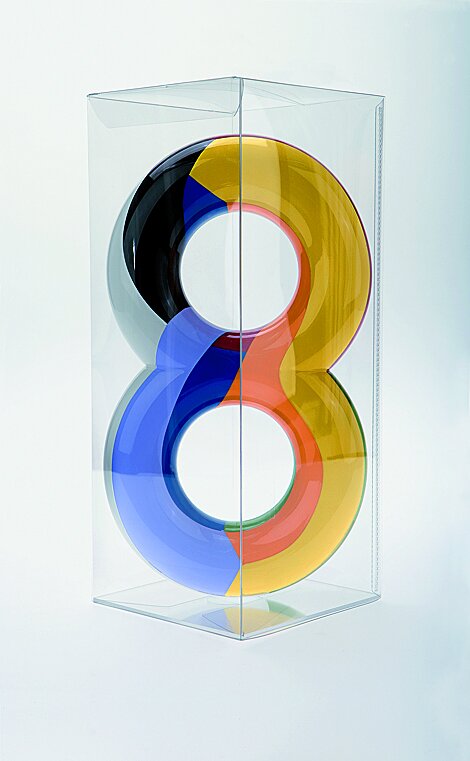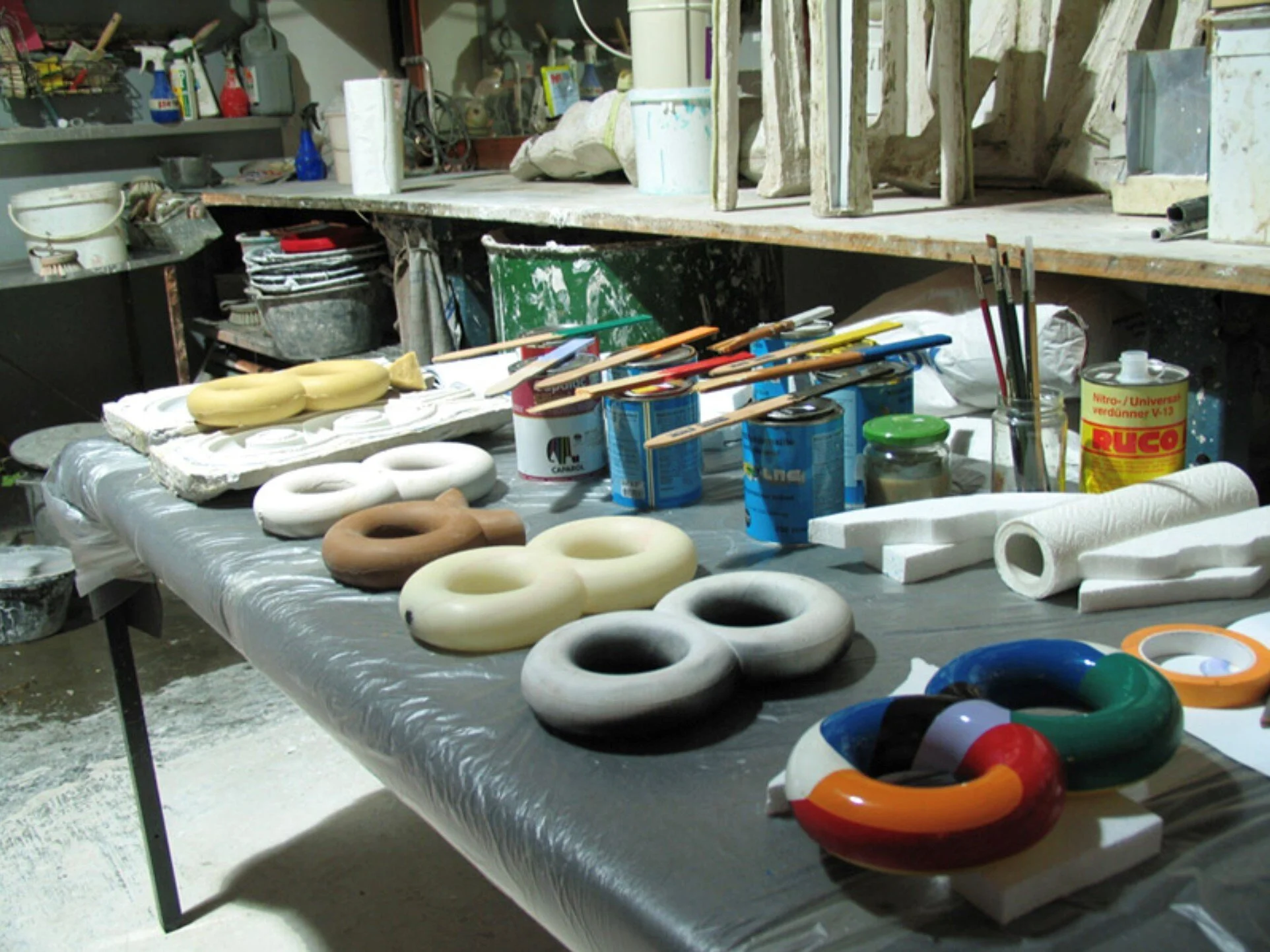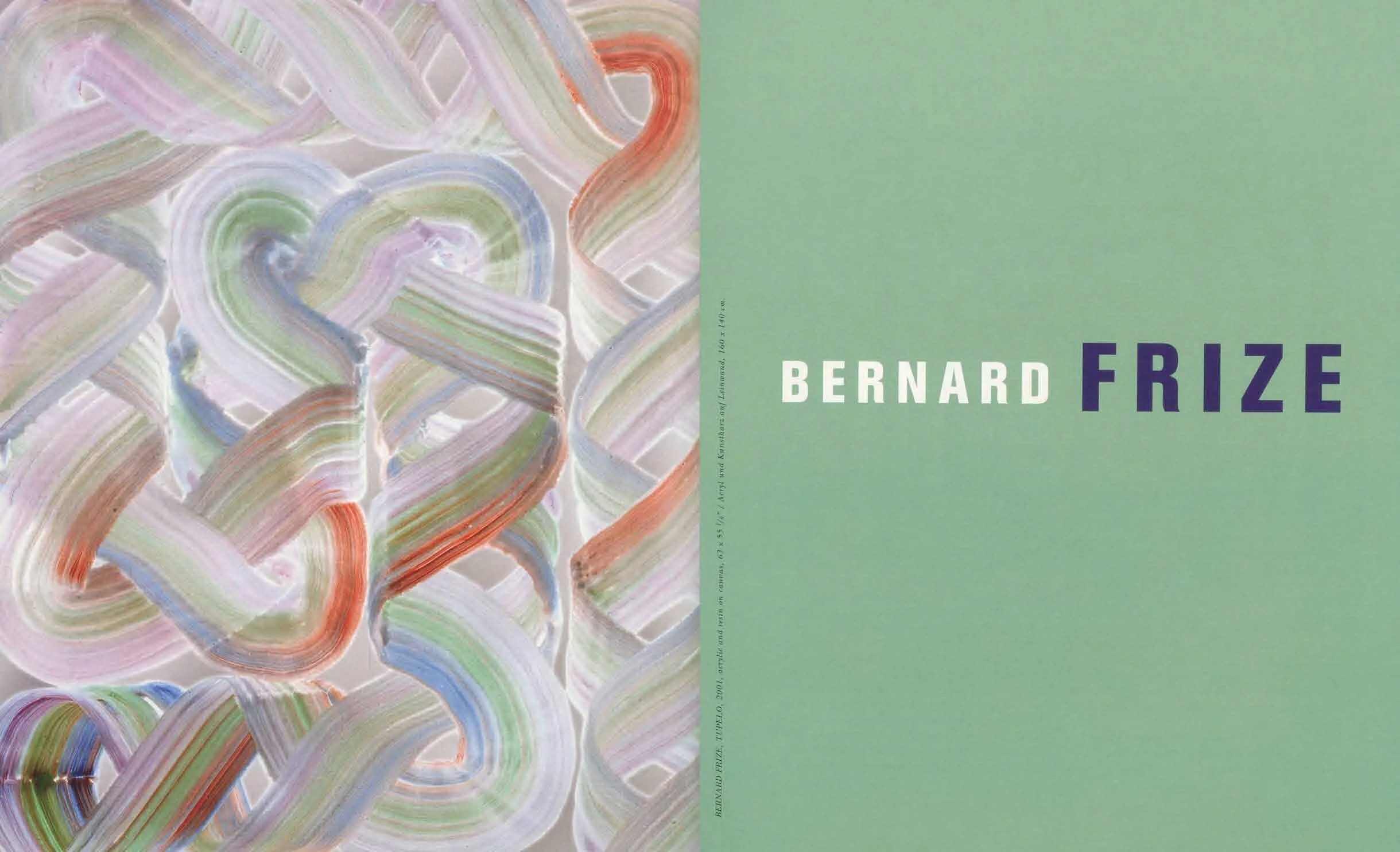Bernard Frize | "Percy John Heawood Conjecture", 2005 | (for Parkett 74)
Read a Parkett text on Bernard Frize
Parkett Vol. 74
Quote from Parkett
“Frize’s paintings deploy colors in their multiplicity of forces; far from any kind of composition, they are machinations of forces—in all senses of the word: the contrivance of a machine, a calculation, crafty plotting, cunning, an event.”
Patricia Falguières, Parkett No. 74, 2005
“What is the greatest number of color fields that can be arranged so that each maintains a border with all others? Bernard Frizes‘s “Percy John Heawood Conjecture” for Parkett 74 (2005) (see image 1) addresses this thorny question. The work’s namesake, British mathematician Percy John Heawood, labored over this and related problems (which originated in cartography) in the years surrounding the turn of the last century. At one point, exploring three-dimensional forms, he determined that no more than eight fields of color can abut one another on the surface of a double torus (a volume shaped, in accidental analogy, exactly like a three-dimensional figure eight). Bernard Frize‘s Heawood is based on this formula.” (Jean-Pierre Criqui).
Bernard Frize noted “I reconstructed this object (i.e. the torus), thinking that it provided a context to my work”.
"Percy John Heawood Conjecture", 2005 (for Parkett 74)
Double torus cast in Polyurethane,
painted in eight synthetic resin colors,
the number of colors sufficient for map
coloring on the surface of a double torus
is given by the Heawood conjecture,
all eight colors share a common border with each other,
10 5/8 x 6 1/4 x 1 3/4” (24 x 8 x 4 cm), 2,75 lbs (1,25 kg),
production by Kunstgiesserei Felix Lehner, St. Gall, Switzerland,
Ed. 45/XXV, signed and numbered certificate
Very limited availability
Read a Parkett text on Bernard Frize
Parkett Vol. 74
Quote from Parkett
“Frize’s paintings deploy colors in their multiplicity of forces; far from any kind of composition, they are machinations of forces—in all senses of the word: the contrivance of a machine, a calculation, crafty plotting, cunning, an event.”
Patricia Falguières, Parkett No. 74, 2005
“What is the greatest number of color fields that can be arranged so that each maintains a border with all others? Bernard Frizes‘s “Percy John Heawood Conjecture” for Parkett 74 (2005) (see image 1) addresses this thorny question. The work’s namesake, British mathematician Percy John Heawood, labored over this and related problems (which originated in cartography) in the years surrounding the turn of the last century. At one point, exploring three-dimensional forms, he determined that no more than eight fields of color can abut one another on the surface of a double torus (a volume shaped, in accidental analogy, exactly like a three-dimensional figure eight). Bernard Frize‘s Heawood is based on this formula.” (Jean-Pierre Criqui).
Bernard Frize noted “I reconstructed this object (i.e. the torus), thinking that it provided a context to my work”.
"Percy John Heawood Conjecture", 2005 (for Parkett 74)
Double torus cast in Polyurethane,
painted in eight synthetic resin colors,
the number of colors sufficient for map
coloring on the surface of a double torus
is given by the Heawood conjecture,
all eight colors share a common border with each other,
10 5/8 x 6 1/4 x 1 3/4” (24 x 8 x 4 cm), 2,75 lbs (1,25 kg),
production by Kunstgiesserei Felix Lehner, St. Gall, Switzerland,
Ed. 45/XXV, signed and numbered certificate
Very limited availability
Read a Parkett text on Bernard Frize
Parkett Vol. 74
Quote from Parkett
“Frize’s paintings deploy colors in their multiplicity of forces; far from any kind of composition, they are machinations of forces—in all senses of the word: the contrivance of a machine, a calculation, crafty plotting, cunning, an event.”
Patricia Falguières, Parkett No. 74, 2005
“What is the greatest number of color fields that can be arranged so that each maintains a border with all others? Bernard Frizes‘s “Percy John Heawood Conjecture” for Parkett 74 (2005) (see image 1) addresses this thorny question. The work’s namesake, British mathematician Percy John Heawood, labored over this and related problems (which originated in cartography) in the years surrounding the turn of the last century. At one point, exploring three-dimensional forms, he determined that no more than eight fields of color can abut one another on the surface of a double torus (a volume shaped, in accidental analogy, exactly like a three-dimensional figure eight). Bernard Frize‘s Heawood is based on this formula.” (Jean-Pierre Criqui).
Bernard Frize noted “I reconstructed this object (i.e. the torus), thinking that it provided a context to my work”.
"Percy John Heawood Conjecture", 2005 (for Parkett 74)
Double torus cast in Polyurethane,
painted in eight synthetic resin colors,
the number of colors sufficient for map
coloring on the surface of a double torus
is given by the Heawood conjecture,
all eight colors share a common border with each other,
10 5/8 x 6 1/4 x 1 3/4” (24 x 8 x 4 cm), 2,75 lbs (1,25 kg),
production by Kunstgiesserei Felix Lehner, St. Gall, Switzerland,
Ed. 45/XXV, signed and numbered certificate
Very limited availability
Artist Document
The following images show various fabrication stages of Bernard Frize’s “Percy John Heawood Conjecture”, 2005
Parkett Text
Read a selected text on Bernard Frize





